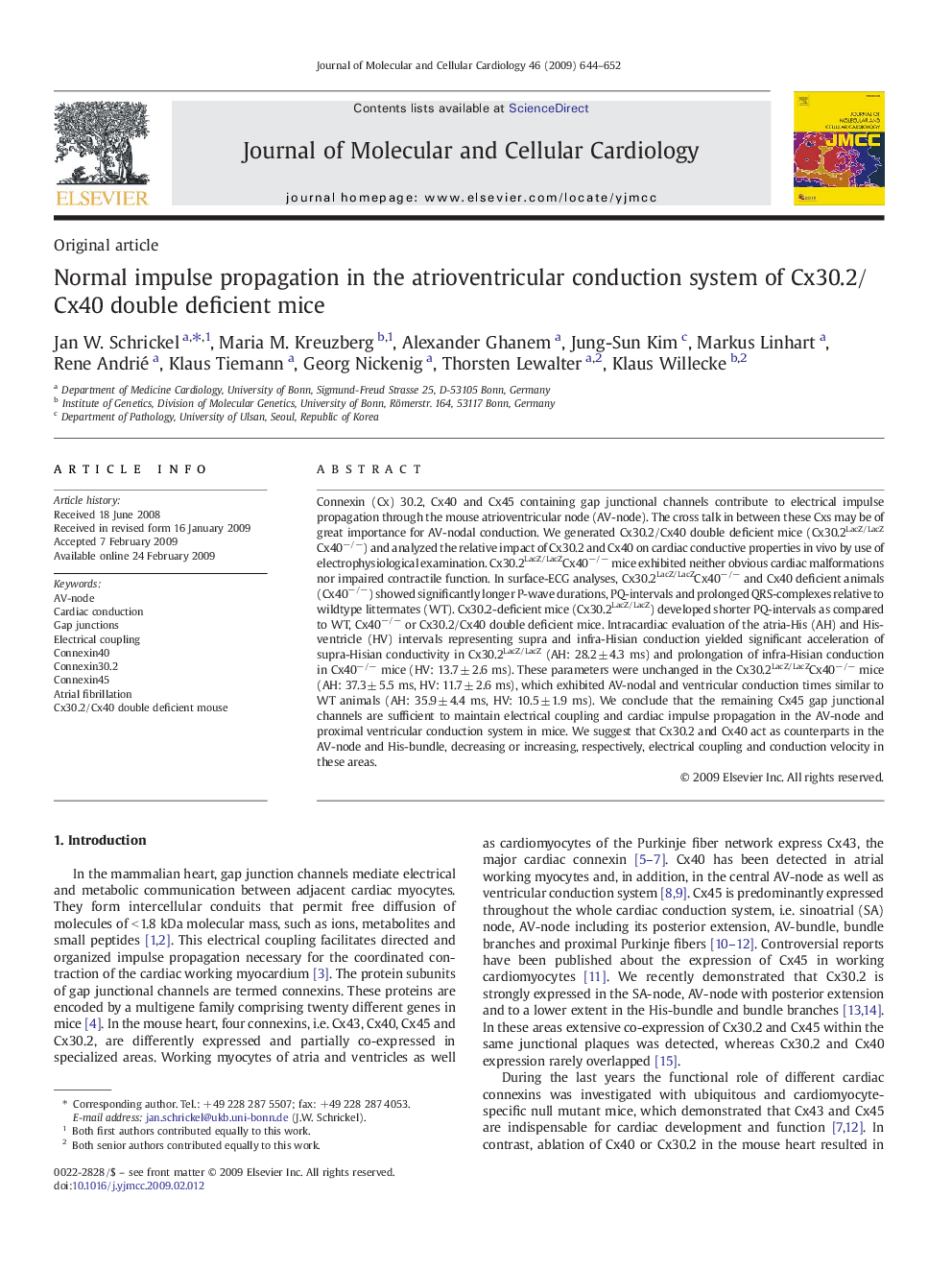| Article ID | Journal | Published Year | Pages | File Type |
|---|---|---|---|---|
| 2191240 | Journal of Molecular and Cellular Cardiology | 2009 | 9 Pages |
Connexin (Cx) 30.2, Cx40 and Cx45 containing gap junctional channels contribute to electrical impulse propagation through the mouse atrioventricular node (AV-node). The cross talk in between these Cxs may be of great importance for AV-nodal conduction. We generated Cx30.2/Cx40 double deficient mice (Cx30.2LacZ/LacZCx40−/−) and analyzed the relative impact of Cx30.2 and Cx40 on cardiac conductive properties in vivo by use of electrophysiological examination. Cx30.2LacZ/LacZCx40−/− mice exhibited neither obvious cardiac malformations nor impaired contractile function. In surface-ECG analyses, Cx30.2LacZ/LacZCx40−/− and Cx40 deficient animals (Cx40−/−) showed significantly longer P-wave durations, PQ-intervals and prolonged QRS-complexes relative to wildtype littermates (WT). Cx30.2-deficient mice (Cx30.2LacZ/LacZ) developed shorter PQ-intervals as compared to WT, Cx40−/− or Cx30.2/Cx40 double deficient mice. Intracardiac evaluation of the atria-His (AH) and His-ventricle (HV) intervals representing supra and infra-Hisian conduction yielded significant acceleration of supra-Hisian conductivity in Cx30.2LacZ/LacZ (AH: 28.2 ± 4.3 ms) and prolongation of infra-Hisian conduction in Cx40−/− mice (HV: 13.7 ± 2.6 ms). These parameters were unchanged in the Cx30.2LacZ/LacZCx40−/− mice (AH: 37.3 ± 5.5 ms, HV: 11.7 ± 2.6 ms), which exhibited AV-nodal and ventricular conduction times similar to WT animals (AH: 35.9 ± 4.4 ms, HV: 10.5 ± 1.9 ms). We conclude that the remaining Cx45 gap junctional channels are sufficient to maintain electrical coupling and cardiac impulse propagation in the AV-node and proximal ventricular conduction system in mice. We suggest that Cx30.2 and Cx40 act as counterparts in the AV-node and His-bundle, decreasing or increasing, respectively, electrical coupling and conduction velocity in these areas.
